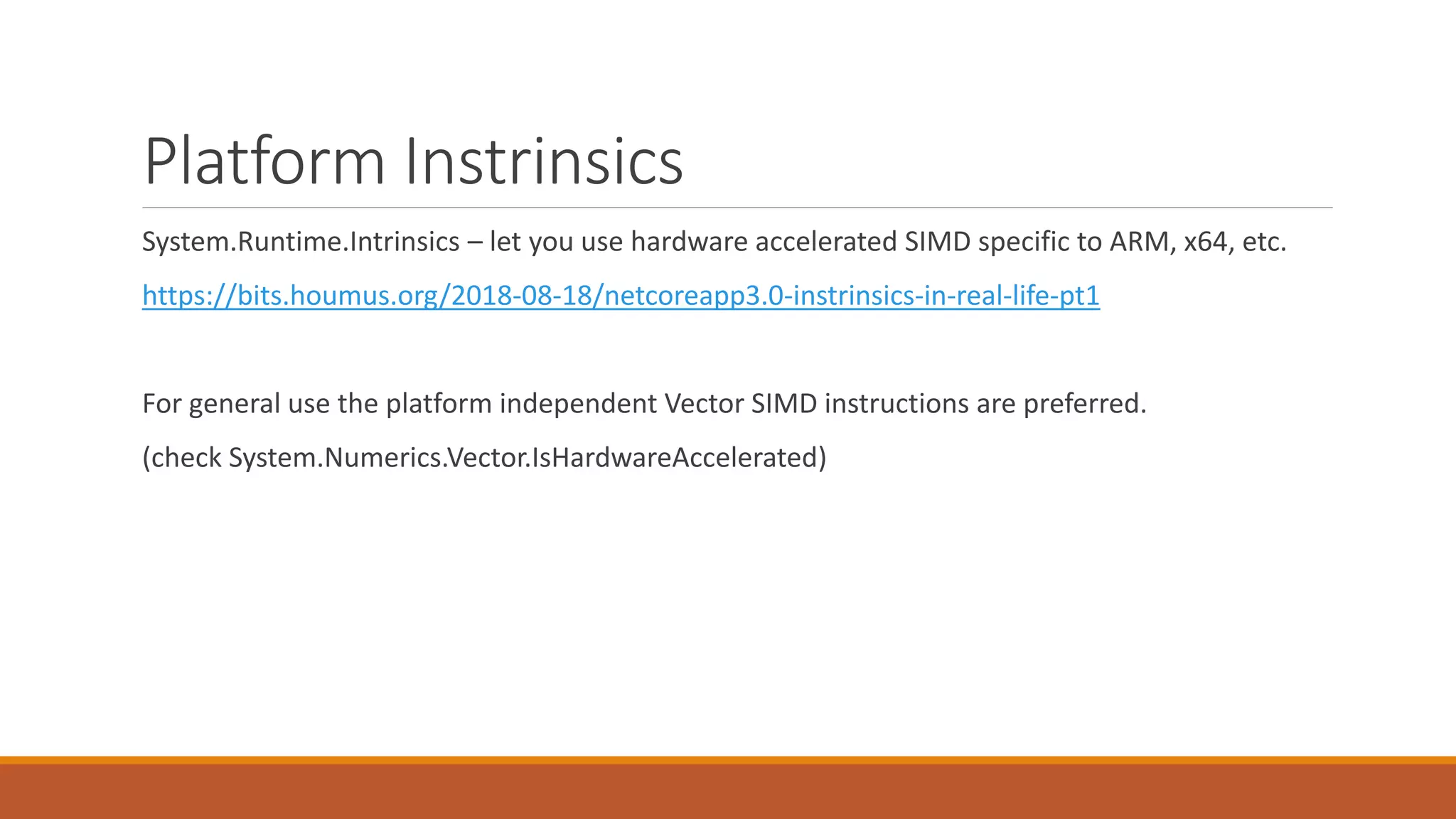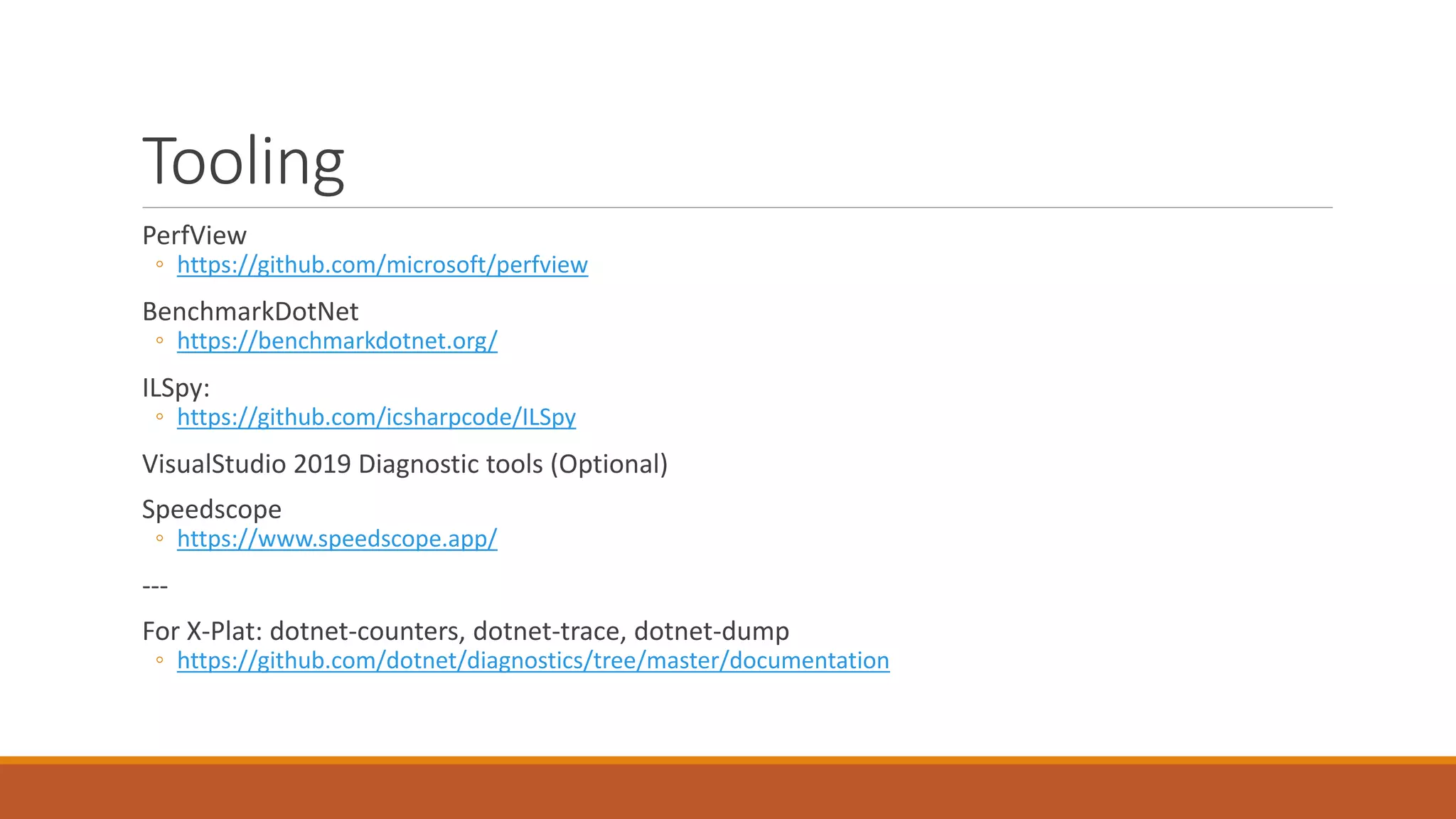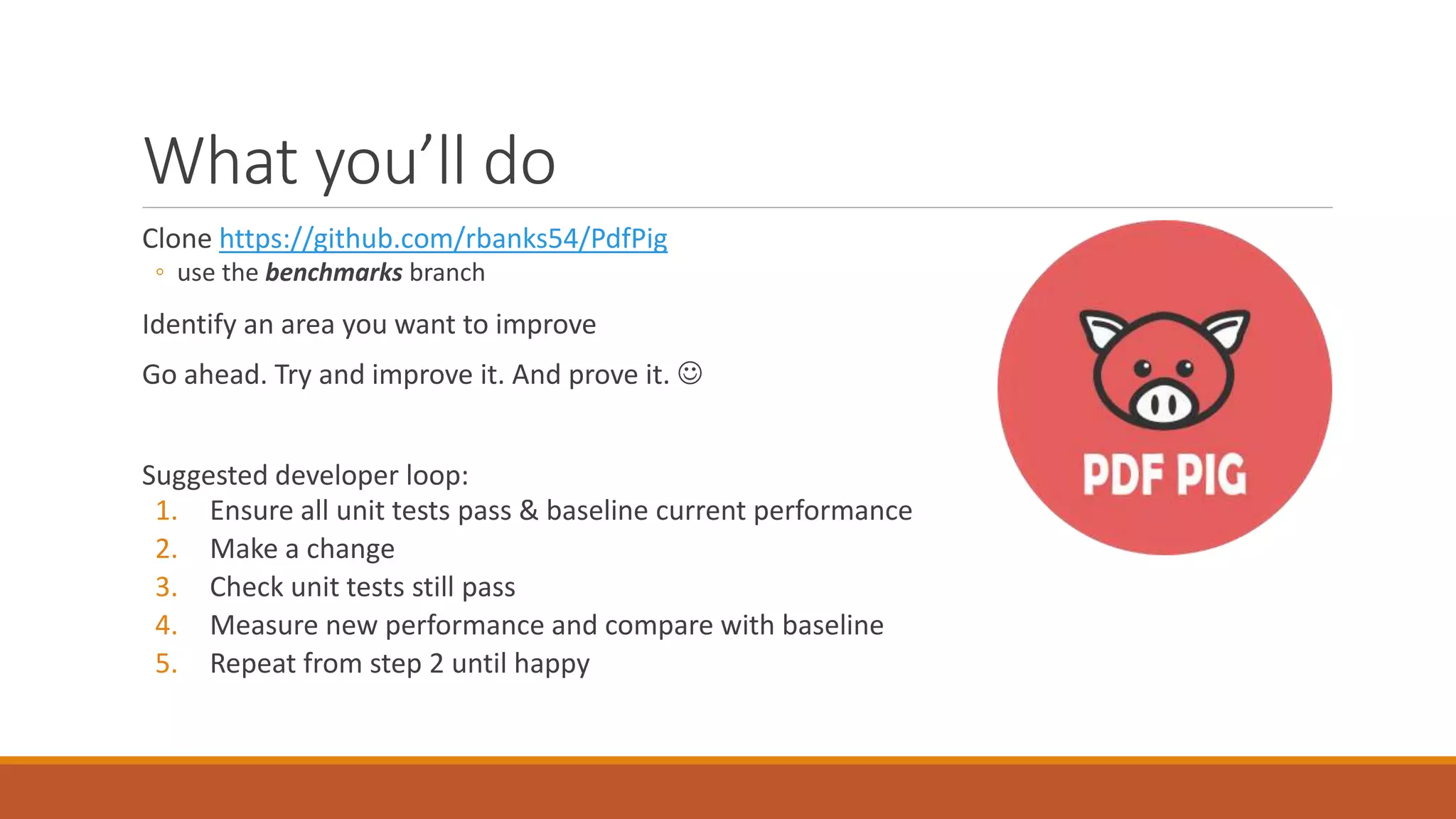The document discusses performance improvements in .NET Core 3.0, highlighting reduced memory allocations, faster garbage collection, and various enhancements such as the introduction of Span<T> and memory pooling. It emphasizes practical techniques for developers to optimize performance, including string interning, avoiding boxing, and using stackalloc. Additionally, it outlines a performance improvement workflow using tools like PerfView and BenchmarkDotNet for real-world applications, specifically within the context of the PDF library PdfPig.
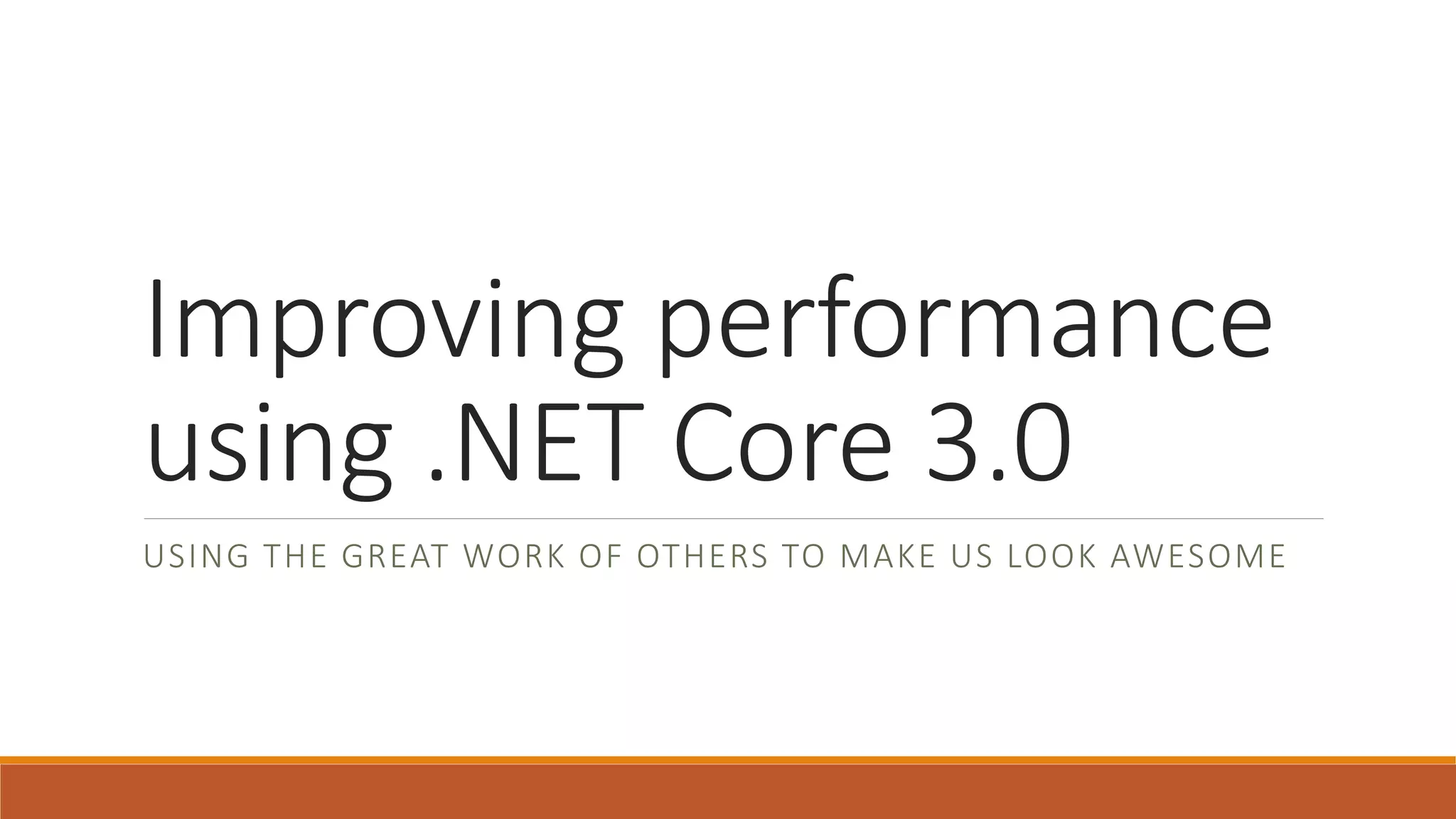

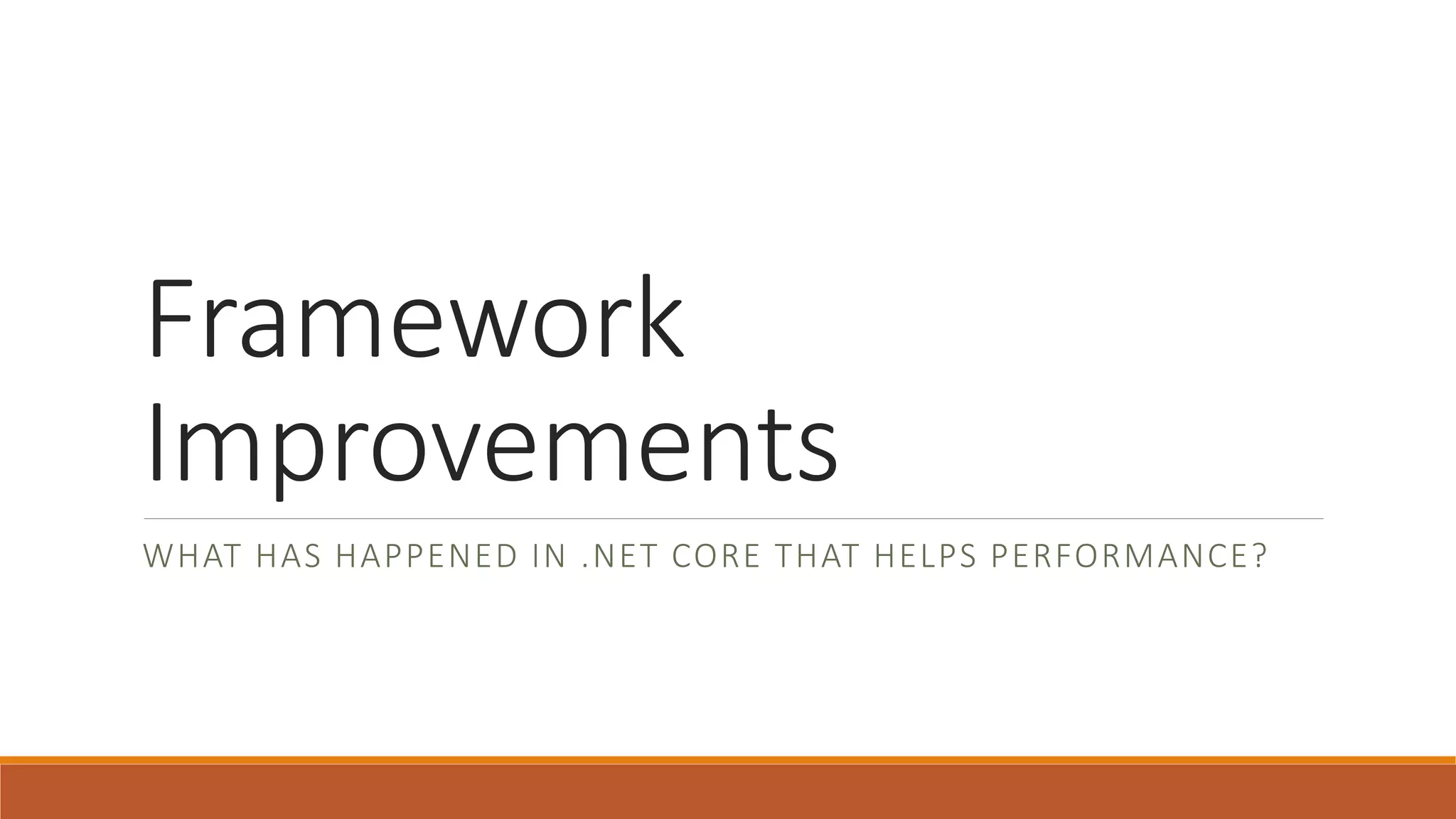
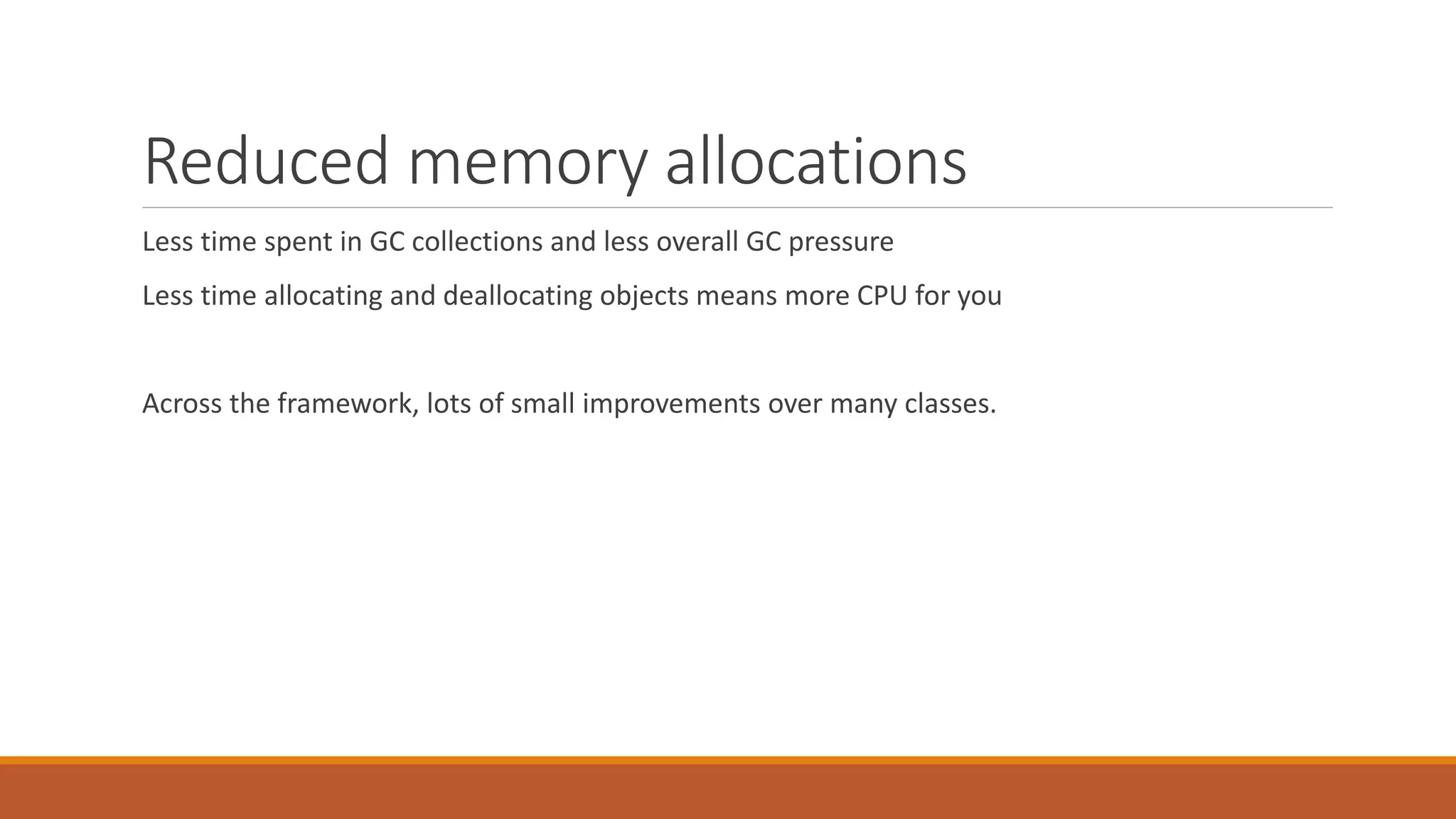
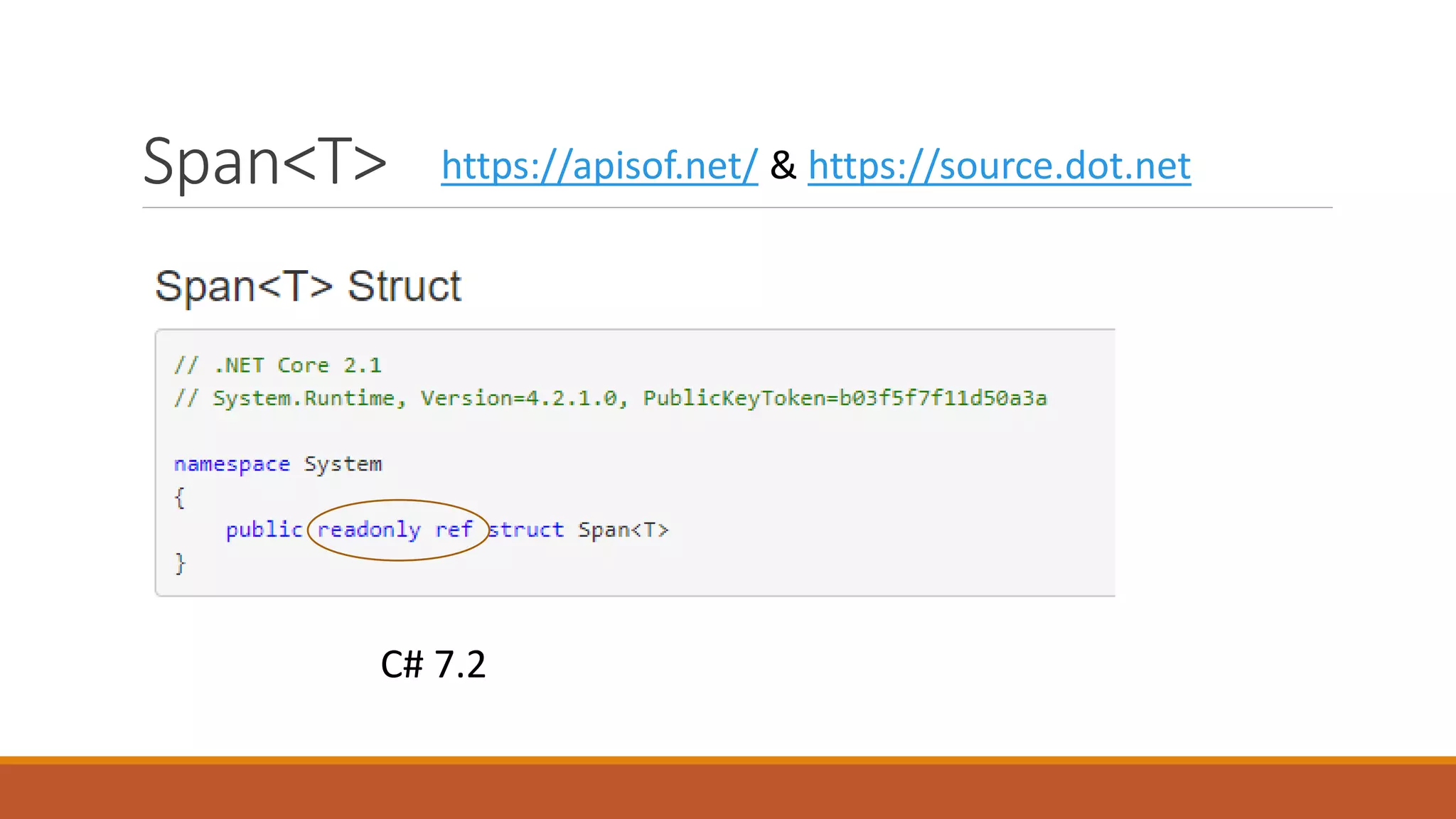
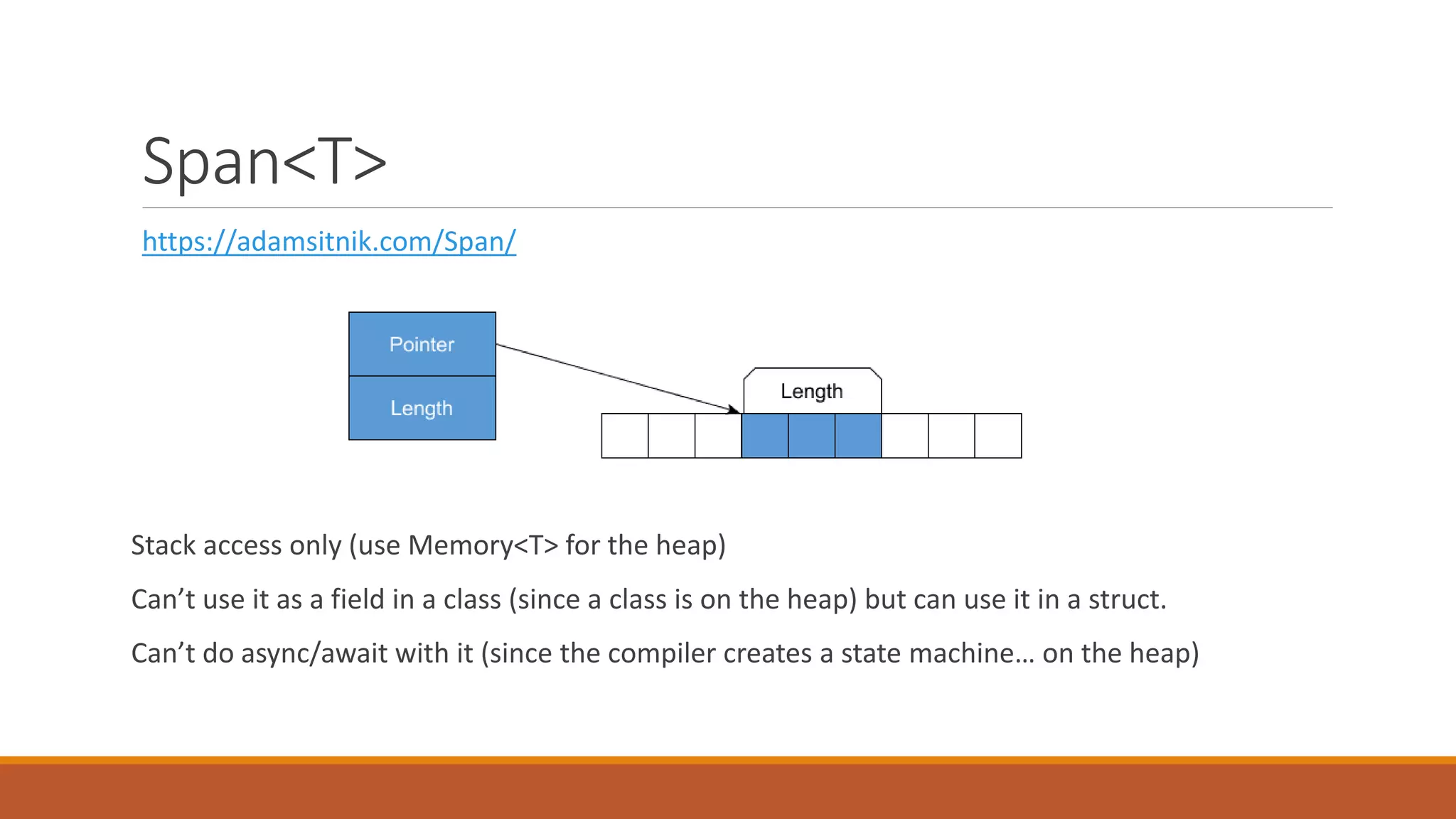


![System.Buffers.ArrayPool Object pooling pattern - https://www.codeproject.com/articles/20848/c-object-pooling In .NET Core (System.Buffers) - https://adamsitnik.com/Array-Pool/ var samePool = ArrayPool<byte>.Shared; byte[] buffer = samePool.Rent(minLength); try { Use(buffer); } finally { samePool.Return(buffer); } Cheaper as soon as you need 1K of memory (or more) – and no allocations required.](https://image.slidesharecdn.com/random-190730213837/75/Improving-app-performance-using-Net-Core-3-0-9-2048.jpg)
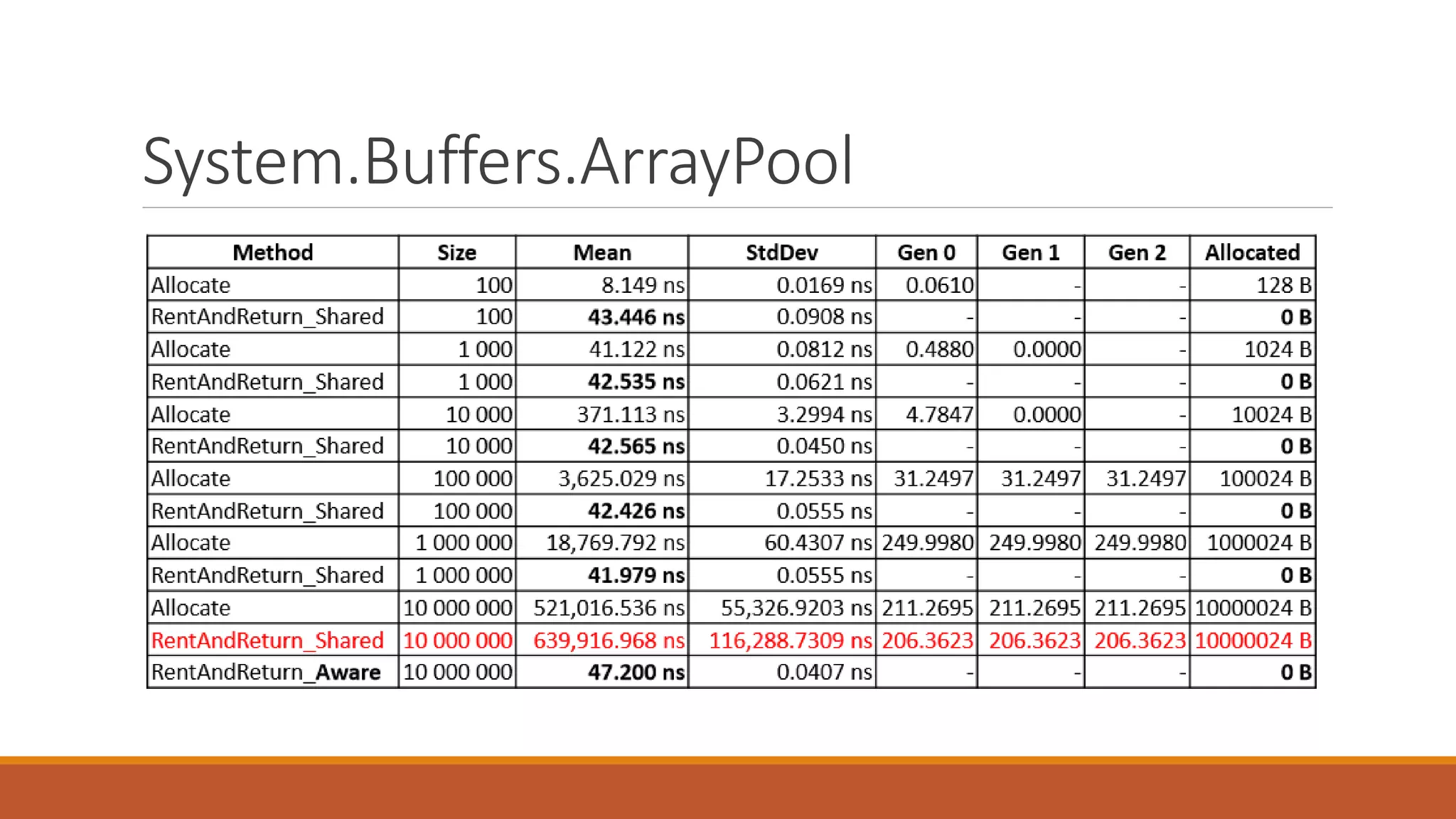

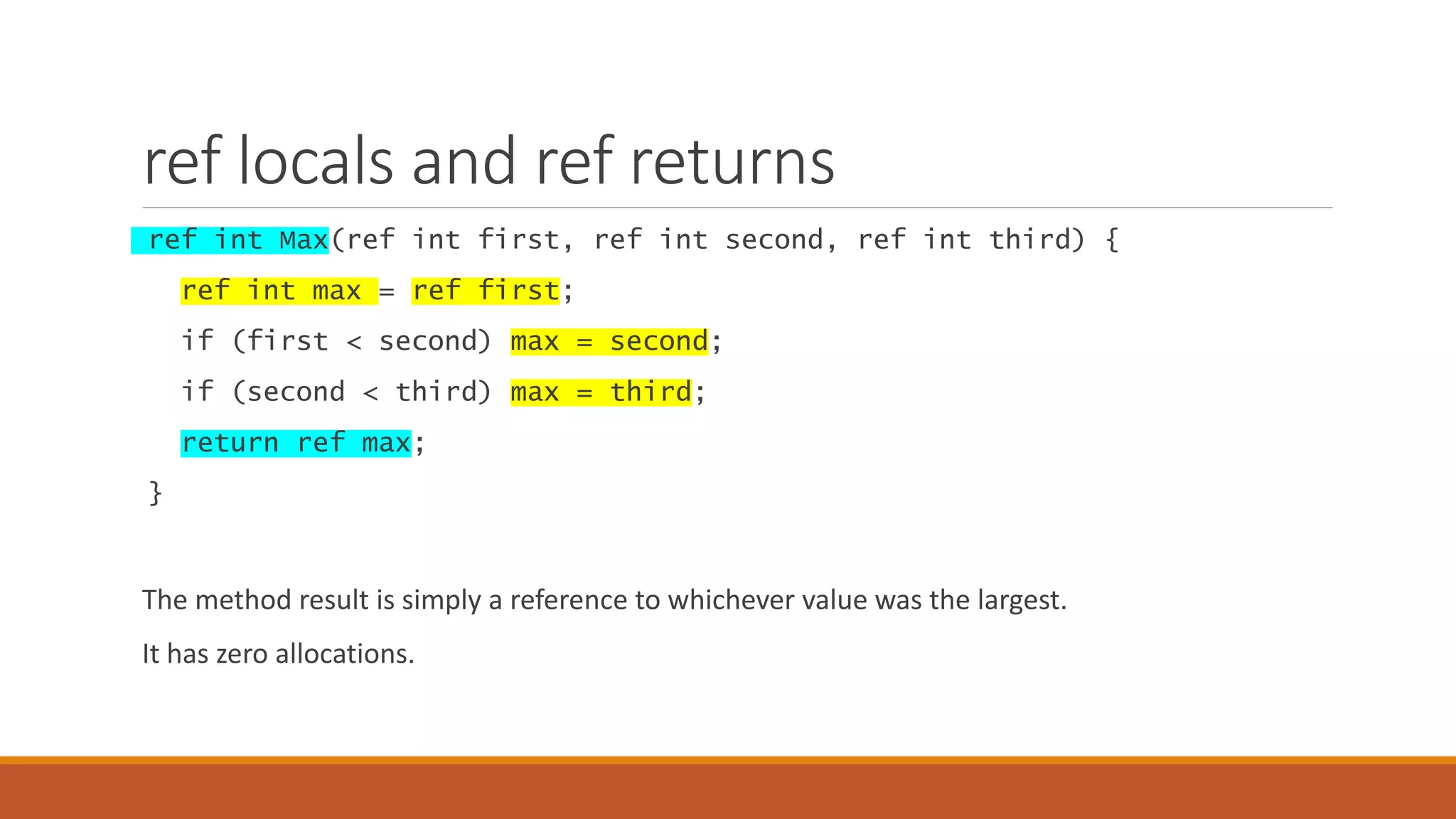

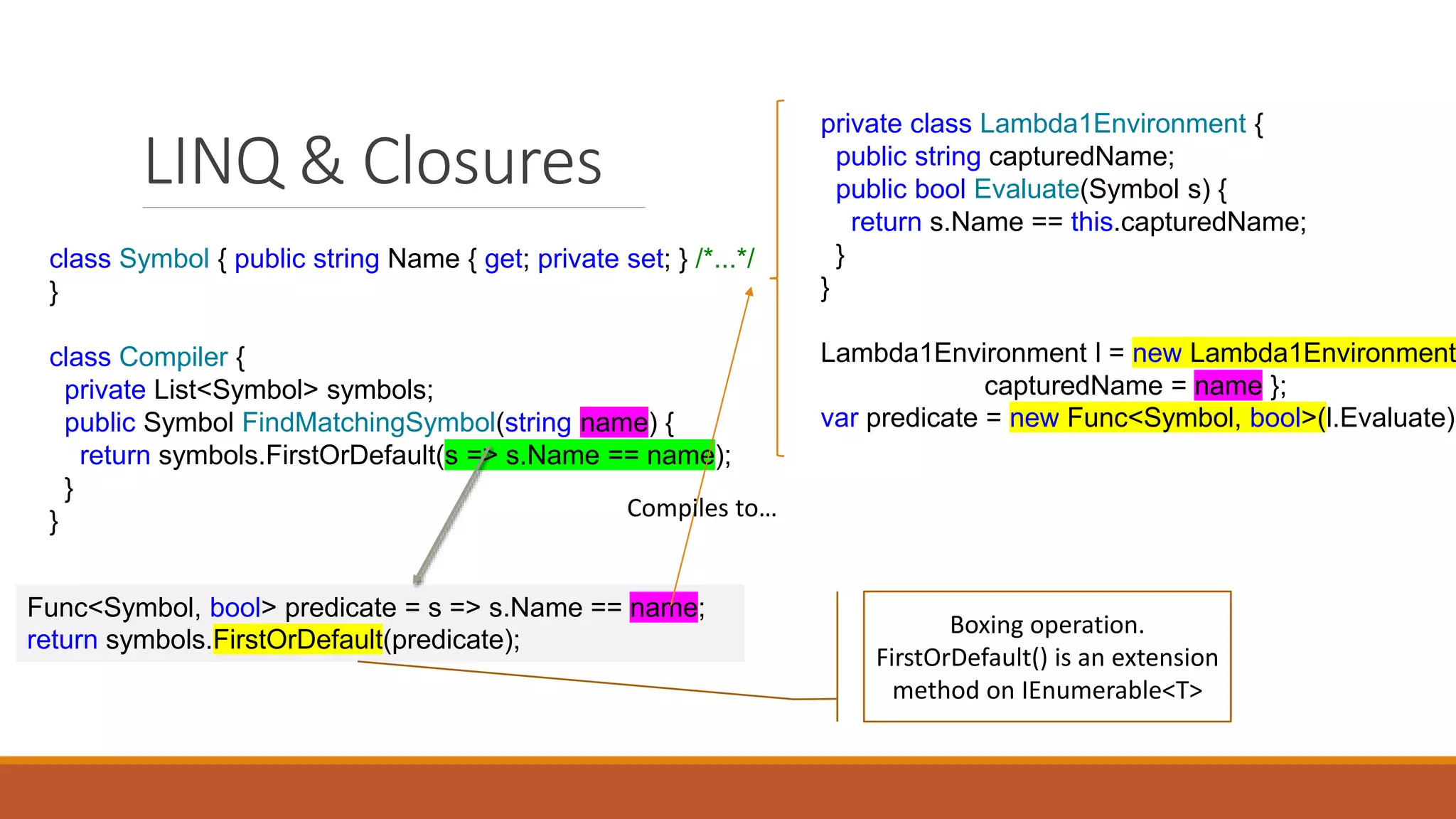
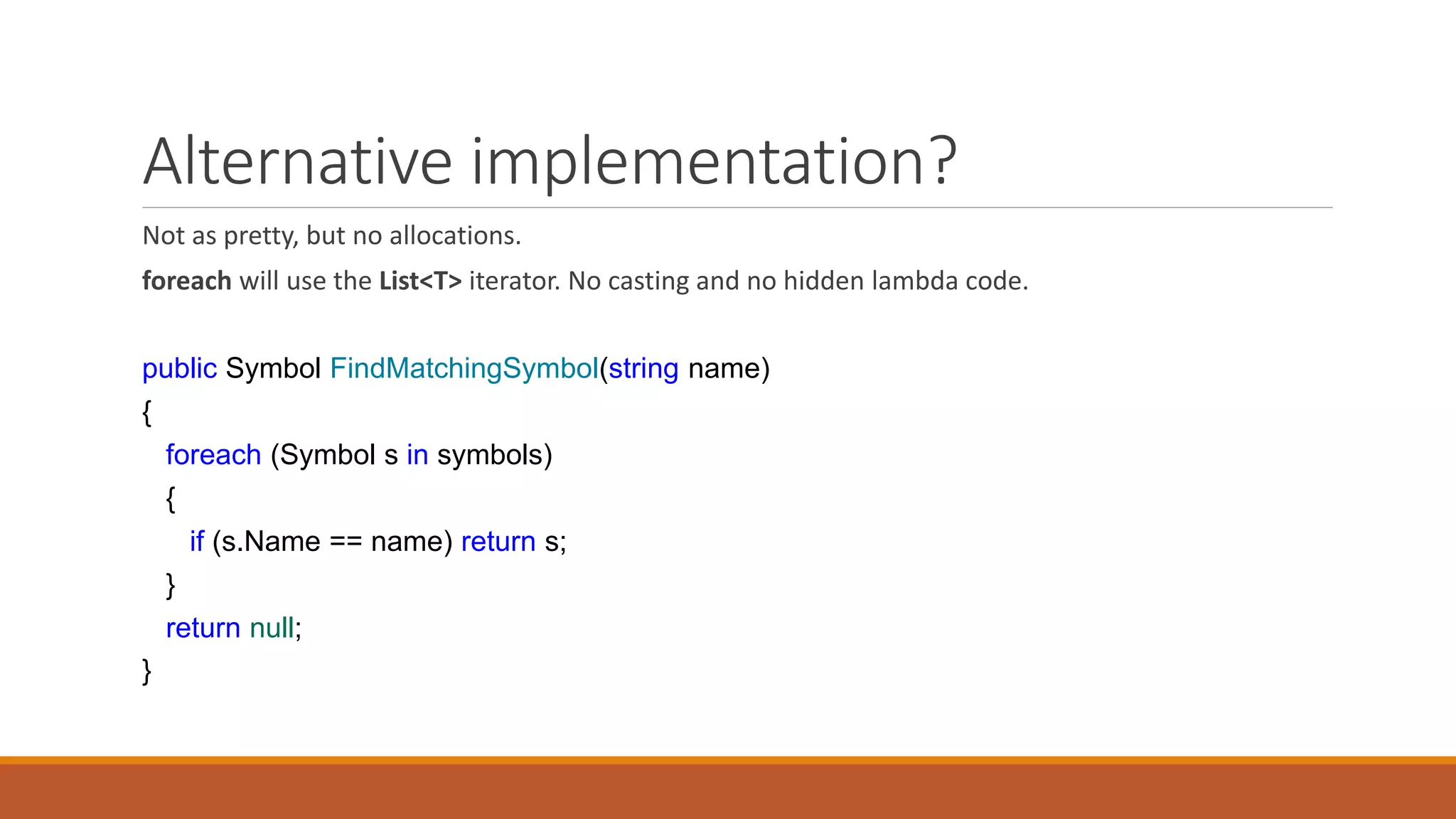
![MemoryMarshal (helps with Spans) public Span<byte> FloatsToSpanOfBytes() => MemoryMarshal.Cast<float, byte>(arrayOfFloats); ---- [StructLayout(LayoutKind.Explicit)] public struct Bid { [FieldOffset(0)] public float Value; [FieldOffset(4)] public long ProductId; [FieldOffset(12)] public long UserId; [FieldOffset(20)] public DateTime Time; } … public Bid Deserialize(ReadOnlySpan<byte> serialized) => MemoryMarshal.Read<Bid>(serialized);](https://image.slidesharecdn.com/random-190730213837/75/Improving-app-performance-using-Net-Core-3-0-16-2048.jpg)
![stackalloc Keyword Allows you to directly allocate memory on the stack Don’t overdo it and keep it for short-lived usage Beware: It’s easy to misuse this and make things worse Span<byte> bytes = length <= 128 ? stackalloc byte[length] : new byte[length];](https://image.slidesharecdn.com/random-190730213837/75/Improving-app-performance-using-Net-Core-3-0-17-2048.jpg)
